As I continue my shoe closet purge, I came across these and thought these would be a great way to kill some time waiting for this weekend’s releases (Kobe 360, Protro, Curry 5). After wearing them the past few weeks, I also decided to keep them.
It’s hard to believe it’s been nine years since the Soldier III released (almost as hard to fathom as Nike retroing the Soldier I!?) I remember walking around the Costa Mesa mall during a vacation and checking these out at the Footlocker there, then walking out with a pair for $69.99. The more time that passes and the more I write reviews on older shoes, the more I realize nothing has really changed in regard to sneaker “technology and innovation”.
Pros: traction, cushioning, fit, support, stability, containment, durable
Cons: needs normal wiping to stay tacky on dusty floors. A little squeaky when walking around haha
Best for: any position
Weight
15 ounces in a US 11 which is the average weight for mids today although these were way lighter than previous LeBrons.
Then vs Now: tie
Traction
 One of the better traction set ups of the Lebron Solider line. I guess the pattern is a sectionalized modified herringbone?
One of the better traction set ups of the Lebron Solider line. I guess the pattern is a sectionalized modified herringbone?
If you look at the direction of the herringbone, it runs more horizontally than vertically than most herringbone set ups which helps with cuts and defensive slides and stops. Of course there is some standard vertical herringbone right up the middle.
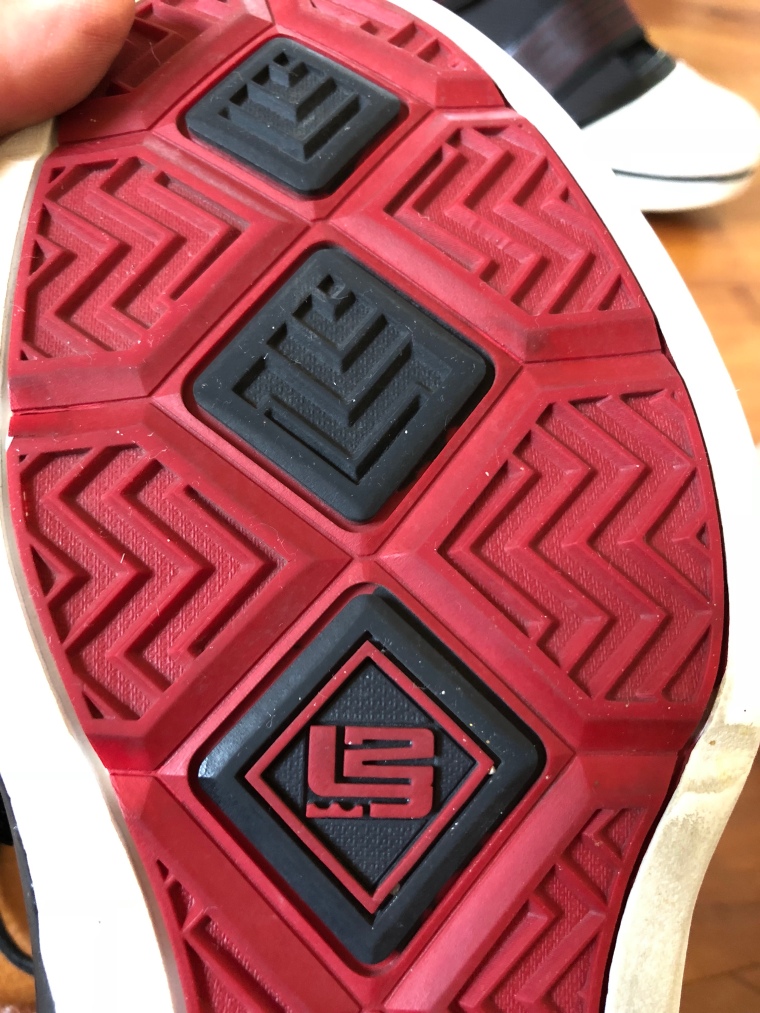 It isn’t perfect because that that flat outer rim can pick up some dust and cause some sliding but nothing out of the ordinary. A more modern pattern would probably have the herringbone extend all the way across the outsole and possibly up.
It isn’t perfect because that that flat outer rim can pick up some dust and cause some sliding but nothing out of the ordinary. A more modern pattern would probably have the herringbone extend all the way across the outsole and possibly up.
If you’re constantly searching for the GOAT traction like me, these are not it. They don’t have the bite of something along the Rose 7 or Curry 2 nor do they deflect dust like them but they do a good enough job, very similar to the Clutchfit Drive type of performance. I have them a little below the Soldier VI traction as well.
Then vs Now: tie although there are better patterns than the Soldier III then as well as now.
Cushioning
Zoom Zoom
A very standard (at the time) heel and forefoot Zoom. Sad to say we get excited about good Zoom set ups like this nowadays but back then, this just the norm. If you take a look at the pics, you can see the Zoom pushing the strobel board which of course translates to a lot of Zoom feel.
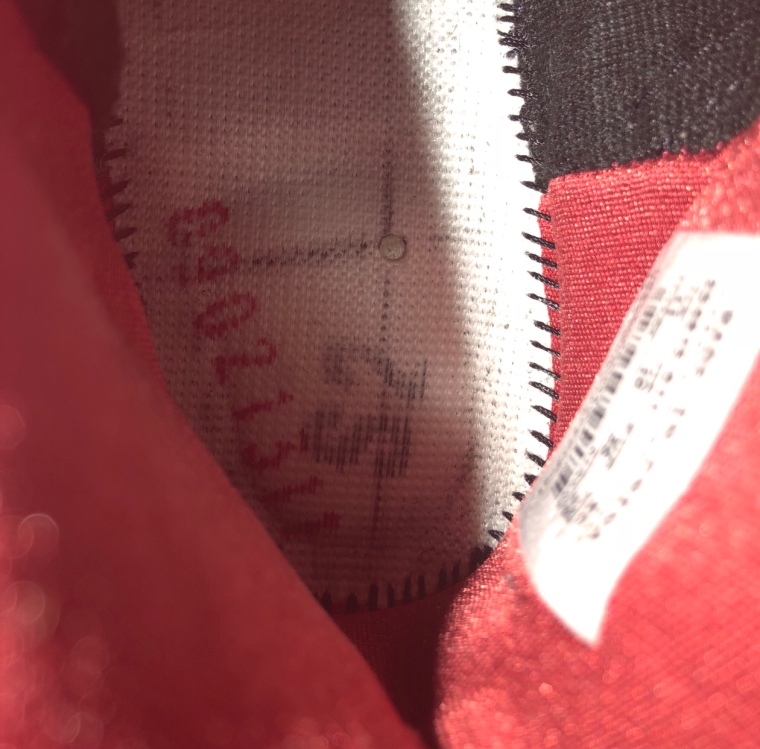
I don’t even need to highlight the Zoom in these pics  Basically it’s the opposite of Jordan and Nike’s protruding Zoom outsole. If you can’t see it, it can’t be working right JB/Nike?
Basically it’s the opposite of Jordan and Nike’s protruding Zoom outsole. If you can’t see it, it can’t be working right JB/Nike?
The Zoom still works great for me after all these years which is a testament to how great and durable Zoom can be when done right. I still prefer the Soldier VI set up but these are pretty damn good as well.
Then vs Now: better than most today
Fit
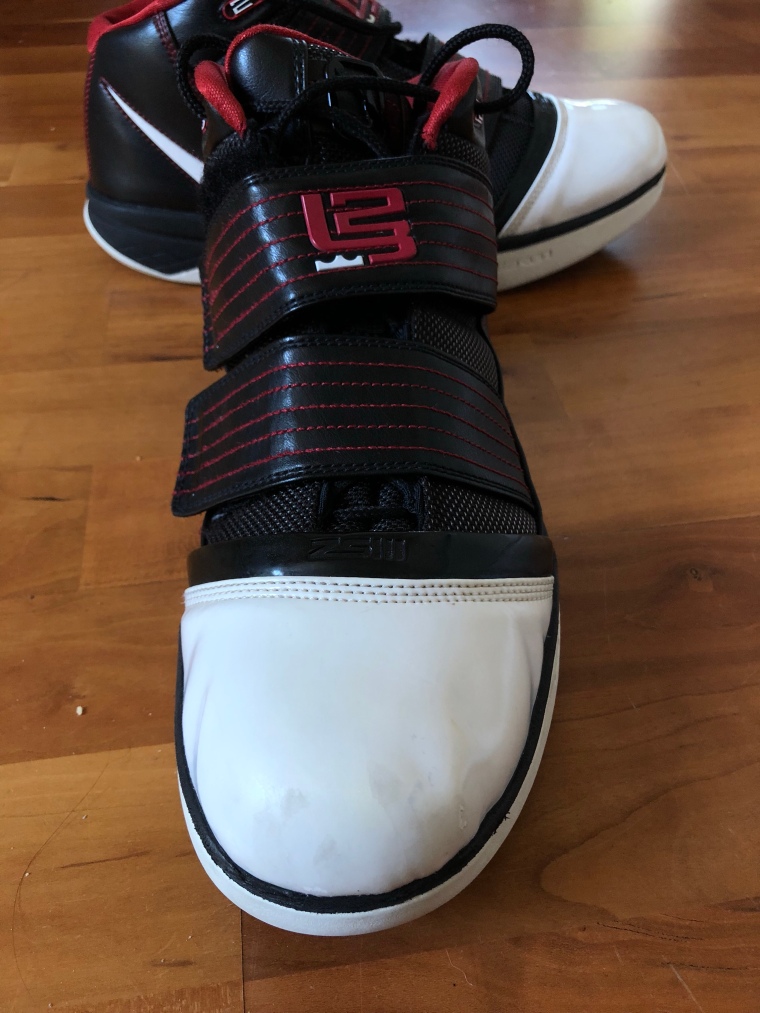 True to size
True to size
Here is how to get the optimal fit for everyone
1. Put shoe on left foot
2. Put shoe on right foot
3. Tie laces on left and right shoe
4. Pull straps down to desired tightness
5. Go play
It can be so simple yet shoe companies love using asymmetrical lacing, removing laces, using minimal eyelets, rails and zippers for no good reason other than marketing. Sure some might fit a little better for some people but 99% of the time, a standard set up will work better.
Then vs Now: better than most but today’s great fitting shoes are just as good
Materials
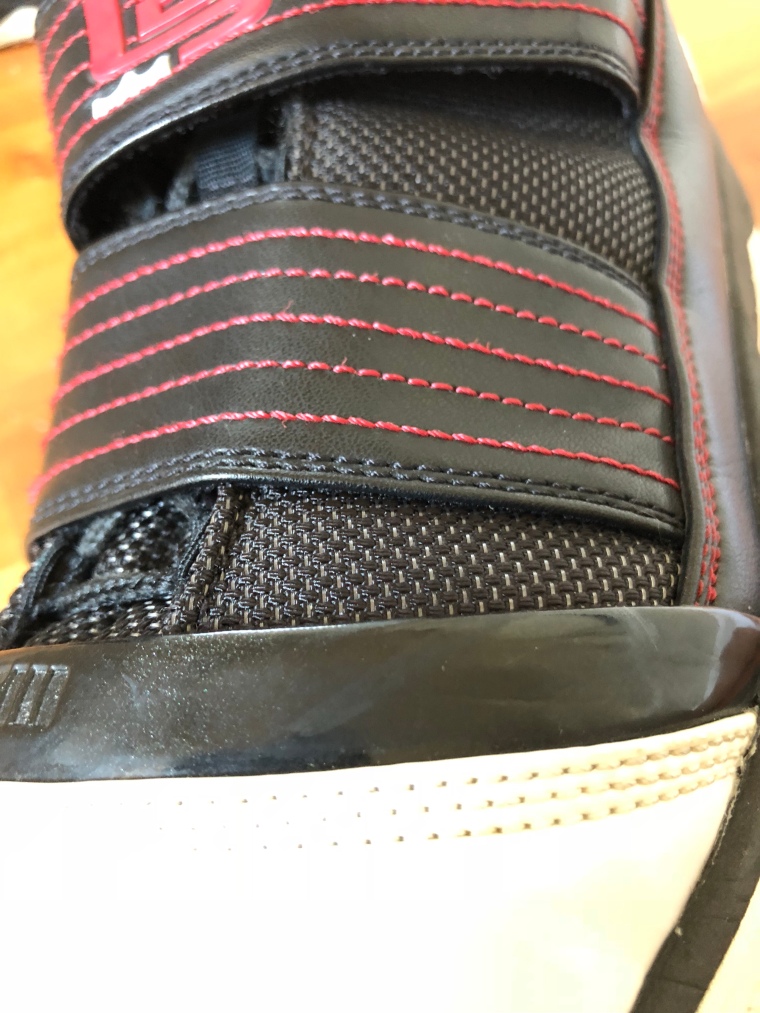
Ballistic mesh, synthetic leather and a patent leather toe cap on most colorways.
Nothing fancy at all but they work just fine. I’m sure Nike could “update” the Soldier III with Flyknit but it wouldn’t feel as sturdy and Nike would probably have to modify other parts of the shoe to fix containment issues.
Then vs Now: I prefer then but no difference in performance
Articulated Toe Cap
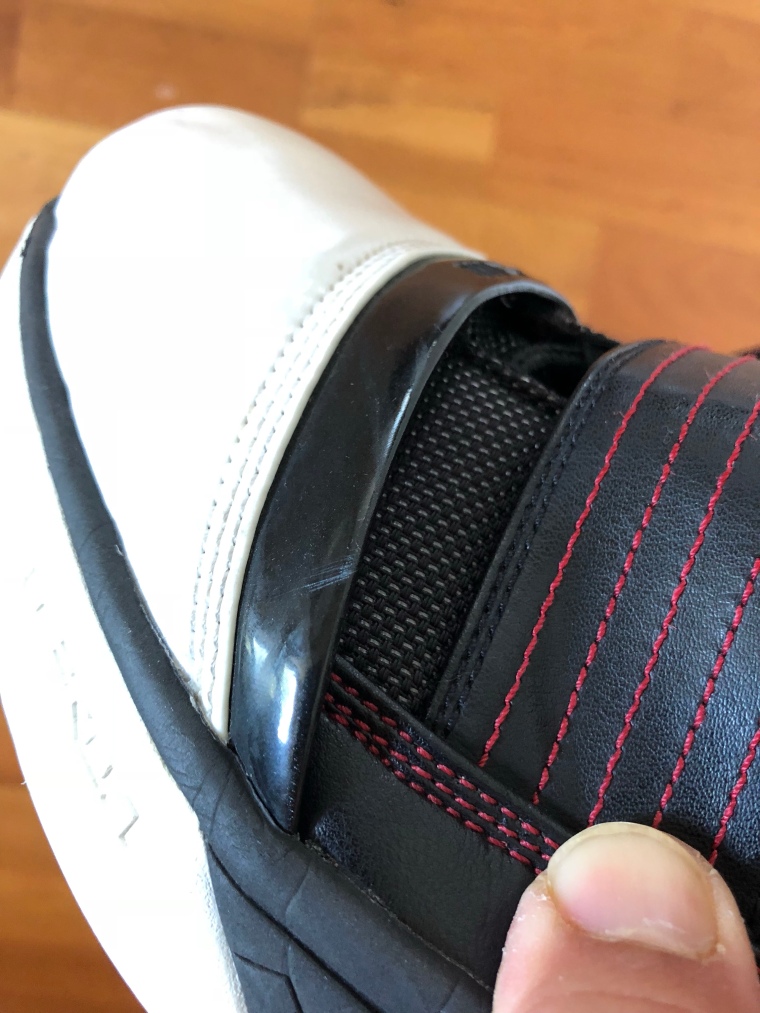
The toe cap design is interesting and it cuts down on break in time versus a traditional non articulated patent leather setup like the AJ XI. During break in, the AJ XI patent leather would crease and crack to allow for a more natural flex. This articulated toe cap just eliminates the break in time . I wouldn’t say it plays any better than a traditional set up since you still have to contend with flexing the much thicker midsole of the shoe. Believe it not, your feet have very strong muscles to power through 1/8 of an inch of materials. You could of course just take the toe cap off and have the same experience as an articulated toe cap.
Support and Stability
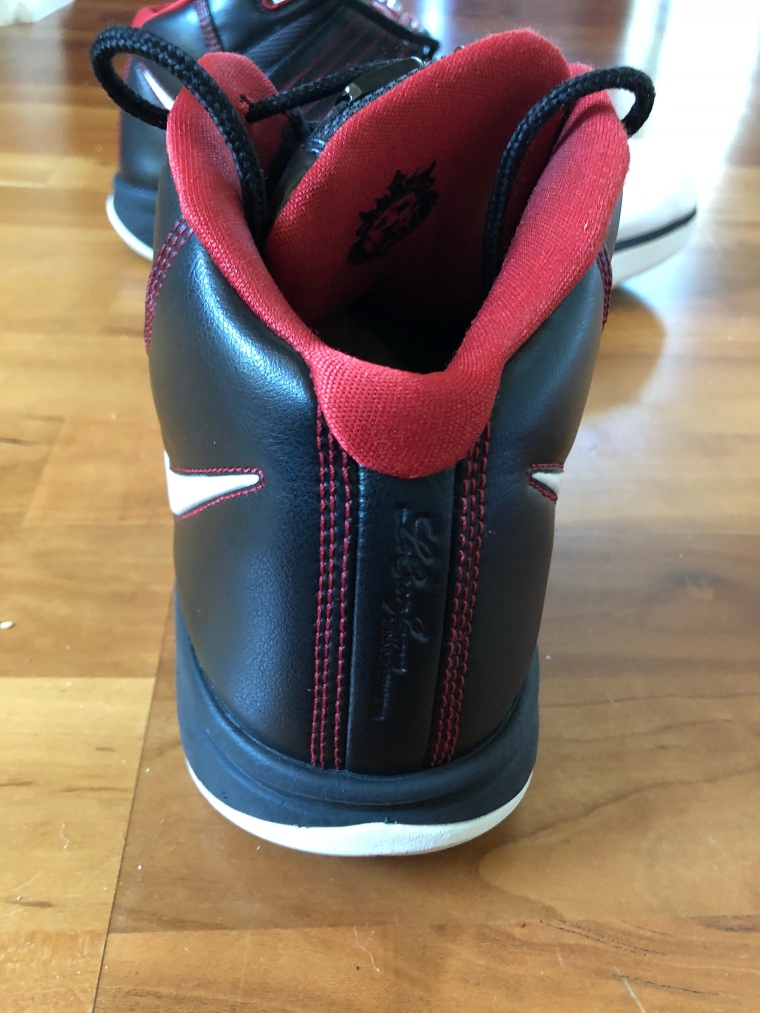 A midcut with some actual stiffness provides just enough additional support without restricting mobility.
A midcut with some actual stiffness provides just enough additional support without restricting mobility.
Although there isn’t a forefoot outrigger, the outsole is widened at the forefoot and is flat with no tippiness.
Then vs Now: tie
Containment

No issues here thanks to patent leather in the toe box. As well as the synthetic rand that runs the length of the shoe.
Then vs Now: tie although a lot of companies didn’t even bother addressing this performance aspect for years
Conclusion
There really is nothing not to like and a lot to love about the Soldier III. It fits great, feels good underfoot, provides adequate protection and sticks to the ground as long as you wipe. Best of all, these hit clearance hard back in the day and were ultra cheap. I honestly thought the Soldier line and PS line was going to be short lived but I was very very wrong.
Like Lebron, the Soldier III still plays like a beast even after all these years. Nine years old is pretty close to the age limit on wearability although I can go back as far as twelve to thirteen years and be okay for most shoes.
What’s funny about the Soldier III is that if I threw these into the mix for everything I’ve reviewed this first quarter of the year except maybe the Harden, I’d pick these. What’s old is new I guess? It just comes to show you that newer almost never means better.
I feel you on your last sentence. About the protruding zoom, the new unlocked zoom actualy make the protruding outsole grind faster over time. So I think shoes with unlocked zoom may lose the bouncy feelings, gradually. Correct me if I’m wrong tho.
LikeLike
I’m sure it would lose bounciness over time but any zoom would. The outsole would grind down a little faster but it does go back up into the midsole a little.just top load it and give us bigger zoom that’s all we want lol
LikeLike
Yeah that’s why seeing Soldier 3 top load zoom setup might actually be a good thing. Make it top load, under a 0.5-1 cm thick soft phylon and make the zoom compartment a bit roomy (lol) like soldier 11.
I’m pretty hyped about soldier 12. Get me all giddy.
LikeLiked by 1 person
Oh yea I agree top loaded feels just as good.
LikeLiked by 1 person
Hey guys I’m from Melbourne Australia I bought the exact same pair as what you have today for $50 and still in it’s original box you’re review is refreshing knowing I’ve bought a great bargain
LikeLiked by 1 person
Great shoe esp at that price !
LikeLike
I loved these but they gave me crazy shin splints even after breaking in.
LikeLike
Did you have that issue with other Zoom
Set ups ? Just curious
LikeLike
Nope, I’m stupidly loyal and only wear Nike basketball shoes. I play on the balls of my feet and my game just didn’t mesh with these. No problems with the Soldier 4,6, and 7.
LikeLike
That’s weird. Try them again and see if maybe it wasn’t a proper warm up?
LikeLike
I sprained my ankle super hard in these after jumping “above the rim” level and landing in someone’s foot. The widened forefoot is very stable but because of the geometry, if you somehow manage to turn your ankle far enough, that hard angle turns your ankle very hard. Kind of like an AF1 would but take more of an angle to tip.
Before that incident, I loved these! lol
LikeLike
I see what you’re saying.. it’s a bit squared off. Landing on a foot you’re pretty screwed regardless .
LikeLike
I loved these shoes aesthetically. They remind me of j11’s – the patent leather toecsp, rand and the ballistic mesh. Then you have those 2 straps that can go undone- ow lawd! I have these in the think pink colorway however they were a size too small so I haven’t really played in a pair. I have been on the hunt for years to get another pair but mo luck. Thanks for the review man! Now let me go to eBay and look for a pair! LOL
LikeLiked by 1 person
Sell the think pinks and buy the right size haha. They go for a decent amount if DS
LikeLike
I wish I would’ve gotten a pair of these when I had the chance! Oh well at least I have my soldier 1’s as long as they last. I miss this zoom air. Great review!
LikeLiked by 1 person
That’s impressive that they are still holding up!
LikeLike
Quick question: do you think that a vnds Kobe 6 will have any durability issues due to age? I’m thinking about buying some allstar Kobe 6s off ebay for 100 bucks and plan on using them for ball. Thanks!
LikeLike
No I think they will be ok. My all star pair is still holding up and they are fairly beat up and worn down.
LikeLike
Another nice review Schwollo.
This was definitely a pair I regret not buying back in the day and now you’re making me regret it even more!
LikeLiked by 1 person
Man, I had the black/white/baltic blue pair of these! Think I waited a while and got ’em for dumb cheap from a mom and pop shop, like maybe $40. Or was it sixty? I can’t remember, but it was low low. I do remember they felt pretty light… in both a good and bad way, if that makes sense. Good because I was hooping in them, bad because the materials felt cheap and the fit felt a little roomy here and there. Bear in mind that this is all based on what I recall my impression was from 8 or 9 years ago. Ha! I don’t think that fit issue really affected my performance at all, but I just remember wishing for a more socklike fit, like I would’ve liked an inner bootie (would’ve made them quite heavy, I suppose). Probably a lot of that impression came from the floating toe cap. Are the arches particularly flat? Or the insole really flat? I seem to remember feeling usual space here and there underfoot at the edges of my feet, as if the inside of the shoe was kinda squared off. Does that make any sense?
I’m wondering if the next shoes I hooped in after these were the Kobe VIs (think it works out chronologically), which might help explain why I remember these not fitting so hot and feeling a little flat underfoot. The VIs fit my foot better than almost any other sneaker I can recall, so probably anything else I wore around the same time wouldn’t live up to them in the fit category.
I’m generally dubious of traction patterns that have a lot of herringbone or whatever linear pattern surrounded by a solid rim—aside from durability, what sense does it make to ditch the pattern that provides the best traction at the edges, which are really important during hard stops and cuts!? That being said, I don’t remember having issues with the traction on these. Still seems dumb, though. And then on these, they made all those interior diamond- and home-plate-shaped sections with fatter borders and big spaces with no traction (ostensibly for flexibility, I assume)… it’s kinda surprising that the traction isn’t fairly lousy.
My memory of the nice Zoom feel agrees with your review. Well, until they popped, at least. Seems like that happened surprisingly quickly.
I’m worried my comments make it sound like I totally disagree with you about the Soldier III’s merits. I do remember they performed really well, just maybe not as well as it sounds like they do for you. I will, however, say that you’re crazy for even ENTERTAINING the thought of picking these over the Harden V2s—hahahahaha! But I get the impression that you like Zoom a little more than I do, so that’s not entirely surprising. (For a long time I only wanted to play in Zoom; nothing else came close. It’s only over the last couple/few years that I’ve found I enjoy in some foam-only cushioning setups.) Anyway, thanks for this trip down memory lane. Glad you dug up your pair and are enjoying them!
LikeLike
Ha I should have said the harden might the be only pair that has a chance against these. Kobe vi has been getting playing time lately as well as I purged my closet and I’m like damn what happened sneaker companies ? Real zoom is so fun
LikeLike
Haha! Yeah, the VIs were special (performance-wise… was never wild about them aesthetically, though I don’t hate how they look either). I wore them until the soles were bald (would still get decent traction on some outdoor courts with that tennis court type of surface. You’re lucky to still have functional pair(s)!
LikeLike
Haha I have a bunch still I don’t know why I buy shoes..habit and addiction I guess lol
LikeLike
Nice you have several pairs to use.
I’m always a little wary of my consumerism. Generally tend to vacillate on how many shoes I should have/buy. Recently there haven’t been that many shoes that I like aesthetically, so that’s helped keep it in check. (I have an easier time rationalizing and accepting purchases for shoes to hoop in than ones for casual wear, although now I’ve got a good selection of five pairs of very good, playable hoop shoes, so I’m trying to fall back on those at least until I wear out the Hardens—haha! Point is, I can largely set aside aesthetic considerations when buying shoes for performance, and since I don’t like how most new shoes look, it’s been fairly easy to hold off on new casual wear purchases.) But that can be a double-edged sword, ‘cause when a shoe comes out that I do like how it looks, I get all hype because I’ve “been good” about not buying sneakers, and can get carried away. Like when I made three different pairs of Dame 3s on miadidas because they’re funky and offered good color and material options 😳
LikeLiked by 1 person
Don’t worry you’re not alone, we’re all in the same boat
LikeLike
Haha! Yep.
LikeLiked by 1 person
Still got my soldier 3s from 09 in fair condition unfortunately toe has some yellowing and barley traction on bottom but decent, if only they retail these again like they did the zoom 3 I would buy two pair just because these are one of my favorite lebron shoes/ color way. After wearing these again since 09/10 they are much lighter than I could remember and still very comfortable only issue is traction I feel it could have been a lil better so we don’t have to wipe off bottom every couple plays for grip
LikeLiked by 1 person
Yep as much as sneaker companies love talking about how light their shoes are they haven’t lost any weight in a decade. Traction was never great for me w the soldier 3 but that zoom is great
LikeLike